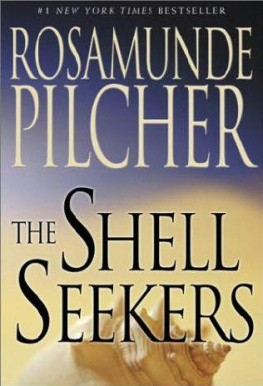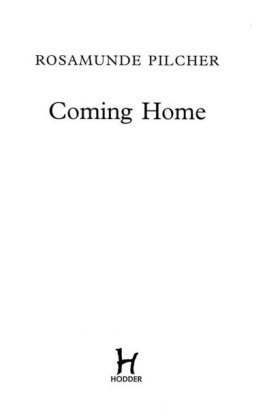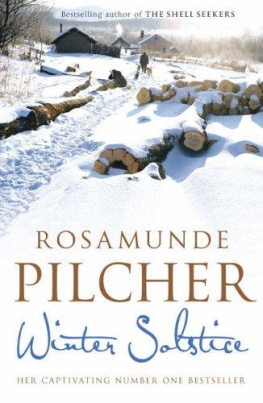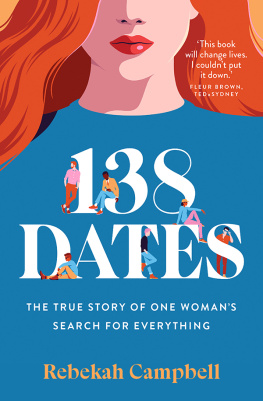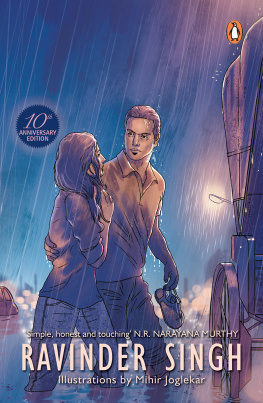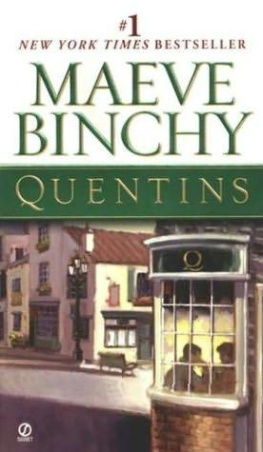This book is for my children, and their children.
Contents
Introduction
TO THE TENTH-ANNIVERSARY EDITION
Once upon a time, in 1984 to be exact, Tom Dunne, of St. Martin's Press, was in London and made the trip north to Scotland to pay a visit to my husband and myself and my family.
By then, I had been a St. Martin's author for a number of years, and Tom had published eleven of my early books, and then Under Gemini, Wild Mountain Thyme, The Carousel , and a collection of short stories entitled The Blue Bedroom . All of these books had done quite honourably, earned their keep, and finally been remaindered, without ever causing much of a stir.
I was content. Simply grateful for what I had achieved; but my children, with touching faith in their mother, had bigger ideas.
That particular evening, there were a good many of them around. They were already old friends of Tom's and, well wined and dined, began to give him a bad time.
Why don't you make our mother famous? they demanded of him. Why don't you spread her name abroad, publish her with a huge bang and loads of hype? Why don't you make her famous, and, more importantly, rich, and isn't it about time we all hit the jackpot?
When he could get a word in edgewise, Tom, with admirable cool, explained the situation. There was nothing in the world, he assured them, that he would like to do more; but the truth of the matter was that, so far, Mother had not come up with the goods. Hadn't produced a novel that would justify huge advance publicity and global promotion. Which was salutary, but at the same time perfectly true.
It seemed time to shove my oar in. What exactly did he want?
He told me. A big fat novel for women. A good read. Something to get the teeth into. And something, above all, that tapped into my life and the experiences of my generation.
I had never written such a book. And no novel had ever taken me more than three months to produce. Thinking about the mammoth task ahead, I quailed slightly. I was sixty, an age when most women are putting up their feet and drawing the old-age pension. I had been writing and working and bringing up my four children since the age of eighteen, and every now and then I felt as though I had scraped the bottom of my mental dustbin, was without inspiration. Perhaps it was time to retire.
But what Tom had said was a challenge. And if a person you respect thinks you can do something, then you usually can. I said. All right.
I hadn't, of course, scraped the bottom of the dustbin. Ideas were floating around inside my head which had been living with me for some time. Three separate themes.
One was the lives of the upper-class Bohemian's who have always had their place in the culture of England. The Guinnesses, and the Harlechs, and the Bloomsbury group, and the lively domestic arrangements of families like the Macnamaras and the Augustus Johns. Having spent my childhood so close to St. Ives, with its colony of painters, writers and sculptors, this lifestyle was familiar to me, and infinitely attractive.
The second theme was the disastrous effect that the prospect of an inheritance, worldly goods and money, can have on a perfectly normal family. Greed and acquisitiveness can be as pervasively destructive as jealousy, and can tear parents and children, brothers and sisters, irrevocably apart.
And the last was a need to write about the days before the war, which I had never done. By then, memories had become enormously important, and a new generation was growing up who had never known those years when Britain, rich and powerful, basked in a social climate that we imagined was high noonbut was, in fact, twilight, the sun sinking as the nation faced, with some resolution, the frightening might of Hitler's Third Reich.
These ideas swam about and changed course and waited to take shape. What finally brought them all together was the chance catching of a programme on television entitled
" Painting the Warmth of the Sun ." It was about the painters of West Penwith, in Cornwall! I had known some of them, and was familiar with their abstract work. But the programme was not only about the paintings, but also the tend which had inspired them. The juxtaposition of faces, canvases, cliffs, moors, and sea all at once brought the whole concept together, and so The Shell Seekers was born.
Penelope Keeling. I wrote the name on a sheet of blank paper, and it looked right. She was right. She was there. Others followed. The tiresome Nancy, the cool-headed Olivia, the materialistic Noel. Lawrence Stern was a contemporary of my husband's step-grandfather, Thomas Millie Dow. And Lawrence Stern's cottage stood where Thomas Millie Dow's large house had stood, above St. Ives and the bay, and surrounded by a beautiful walled garden. Olivia's love affair with Cosmo Hamilton took place in a quinta in Ibiza where lived old friends who had settled there after the war; and the house in Oakley Street, filled with lodgers, was the home of an elderly aunt.
It all came together. It took two years to write, because of various inevitable domestic interruptions: illness, accidents, births, weddings, and deaths. In September 1986 I had to pack the manuscript and the typewriter away, and travel to the U.S. where my daughter was having a baby in Bellport, Long Island. When I wasn't looking after her and the infant and the other children, I found time to nip up lo New York City and have lunch with Tom. Then I promised him that when I got home, I would finish the novel.
Which I did. Another three weeks' solid work and it was done, THE END, I typed, and went downstairs. A farm meeting was taking place, and our accountant had come to keep control.I found him standing in the hall, put my arms around his neck, kissed him, and said, "It's finished." He bucked slightly, having never before been kissed by me, but he behaved pluckily, made the right noises, and said politely that he was looking forward to reading it.
He was one of the first to do so. I gave him the first proof copy, and he returned it to me with a card inside. He had written. "Ros. this has to be a bestseller."
Success was a bit like climbing a flight of stairs. One step at a time. But the moment came when I knew it was within my hand. This was one evening, about three weeks after The Shell Seekers was published in the U.S. I was alone in the house when the telephone rang. My daughter in Bellport. Where have you been? she asked. Tom Dunne's been trying to get hold of you. You've made it! The Shell Seekers is on The New York Times Bestseller List!
Incoherent conversation ensued, the kind associated with truly exciting moments. A lot of shrieks of joy and disbelief, two people talking at the same time, and neither making much sense. Finally Pippa said, I must go, get off the line. Tom will want to talk to you. So pleased for you. Love you. Byeee.
Almost immediately, another call. This time, Tom Dunne. Wonderful girl. We've made it. We've done it. There's a party on here. Champagne. I'll talk later. Good-bye.
Then, Maureen Walters, my agent from Curtis Brown. Ros, you're on the Bestseller List.
I know. Tell me about it.
I can't. No time. There's a cab waiting, and I'm going to St. Martin's Press to drink champagne.
It seemed that everybody was at the New York party except me. I poured a lonely, but celebratory, whisky and soda, and told the dogs the good news.
So that was how it all started. Now The Shell Seekers is ten years old and still going strong. Not only in the U.S. and the U.K. but in Scandinavia and Germany and Spain and Israel and Eastern Europe and Argentina and Japan. Translated into so many different languages, and published under so many delightfully different book jackets.
For this ten-year edition, I have been asked to write this introduction. All I can say is that I would like to think that perhaps it will be bought as a present for some twelve- or thirteen-year-old, sated with comics and teenage mags, and ready and waiting to sink his or her teeth into an adult book that will arouse their interest and attention, keep them turning the pages, and start them off on the long and wonderful road of reading for pleasure.
Next page
